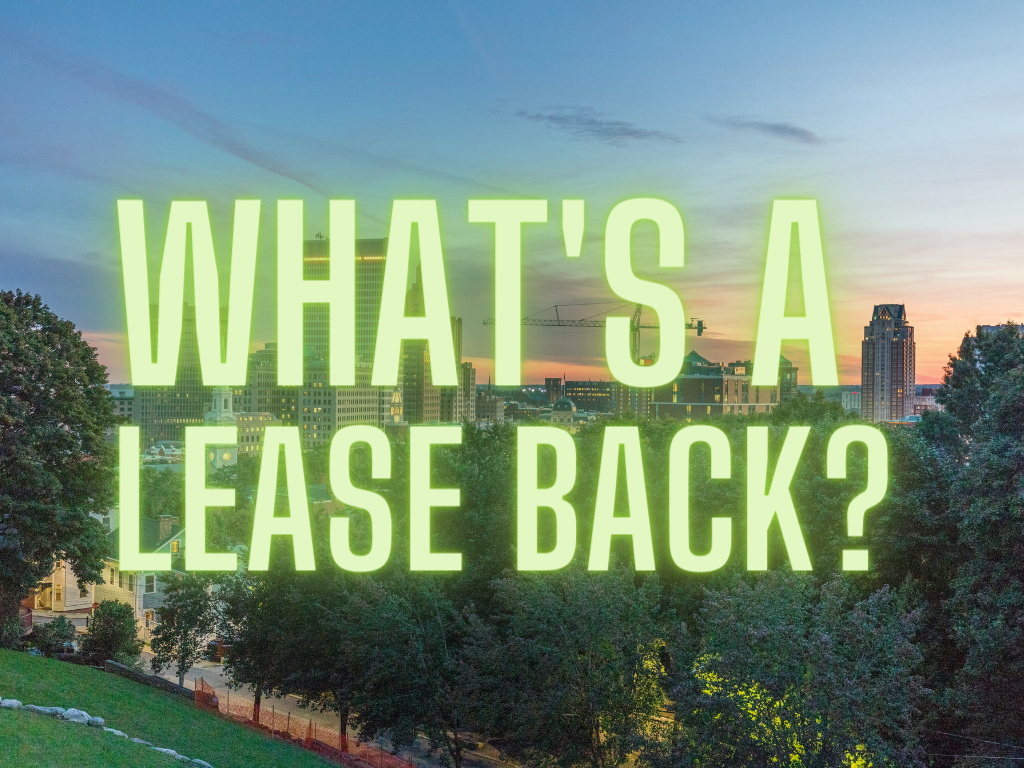A lease back agreement or arrangement is one of many components to an offer that you can consider when submitting an offer to purchase a home. My job as your real estate agent is to help identify the winning combination! It’s no secret that we’re in a hot sellers market and you will most likely be competing with other buyers when you decide to submit an offer on a property. This means that we need to talk about how to craft an offer strategy that will win the offer. In this blog post, I’ll explain what a lease back option is and delve into the pros and cons of including it as part of your offer.
In the realm of real estate, there’s an array of options that can make or break a buyer’s journey.
Let me use an example of a recent buyer that I worked with. For Emily, an astute buyer seeking a home in the Hill & Harbor neighborhood of East Greenwich, the Lease back arrangement became the secret to her success in a competitive multiple offer situation. The sellers needed to find a home of their own to buy–but how would they get an offer accepted with a contingency to sell their home? I negotiated a quick closing (21 days!) and a sixty day lease back agreement—that meant the sellers had sixty days to find a new home.
Understanding Lease Back:
The Lease Back option, a game-changing strategy, allows sellers to rent their property from the buyer after closing. In a market where a scarcity of homes often sparks multiple offers, a leaseback agreement can tip the scales in a buyer’s favor.
Pros of a Lease Back:
- A Winning Edge in Multiple Offers: A Lease Back can be the key differentiator that sets a buyer apart in a competitive multiple offer situation.
- Flexible Transition for Sellers: Sellers gain the flexibility to stay in their home while searching for their next property, easing the moving process and also making it more likely that they’ll be able to get their own offer accepted.
- Guaranteed Rental Income for Buyers: Buyers enjoy immediate rental income, helping to offset costs and mortgage payments. The agreement will include a set amount that the sellers will pay the buyers post-closing.
- Strengthened Seller-Buyer Relationship: Lease Back fosters goodwill between parties, making negotiations smoother.
Cons of Lease Back:
- Delayed Possession: Buyers will need to wait for the property they’ve purchased, delaying their move-in plans.
- Legal Considerations: Lease Back agreements require careful legal documentation to define terms, responsibilities, and rental rates.
- Risk of Damage: There’s a possibility of wear and tear during the lease period, which can raise concerns for buyers.
- Market Fluctuations: Buyers need to consider potential changes in the real estate market that might affect the property’s value.
- Exit Strategy: Both parties should plan for a smooth transition when the lease period ends, including the potential need for repairs and cleaning.
How A Lease Back Secured Her Dream Home:
Emily set her sights on the Hill & Harbor neighborhood of East Greenwich, RI. But her dreams faced a hurdle – the market in East Greenwich is consistently HOT which would undoubtedly mean we would be competing with multiple buyers. As her dedicated real estate agent, I knew that standing out was essential and that we would have to craft an offer that would appeal to the sellers.
Recognizing the value of a lease back, I strategized with Emily to craft an offer that included an option to close quickly and offer the sellers the option to stay in their home up to sixty days. I presented the offer to the sellers as a way to ensure a seamless transition while they searched for their new home. Emily’s rental in Boston had four more months until the lease ended–with the lease back it meant she didn’t have to pay for an empty apartment or pay fees to break her lease.
The Success:
The sellers were intrigued by the lease back proposal, appreciating Emily’s understanding of their situation and accepted our offer. Emily secured her dream home by embracing innovation and trusting my insights. The closing attorney that I referred Emily to has a very effective lease back agreement. The agreement included the rental amount, security deposit to be paid by the sellers at the closing and held by the attorney. The sellers continued to be responsible for their utilities and they also secured renters insurance for the duration. Understanding the lease back process and communicating effectively with the seller are crucial for a successful leaseback agreement.
Navigating the real estate landscape demands creativity, strategy, and expert negotiation. The Lease Back option, as demonstrated in Emily’s journey, can transform a simple transaction into a rewarding success story. By exploring this option thoughtfully, you can create a win-win solution that satisfies both your needs as a buyer and the seller’s requirements. Happy house hunting!



